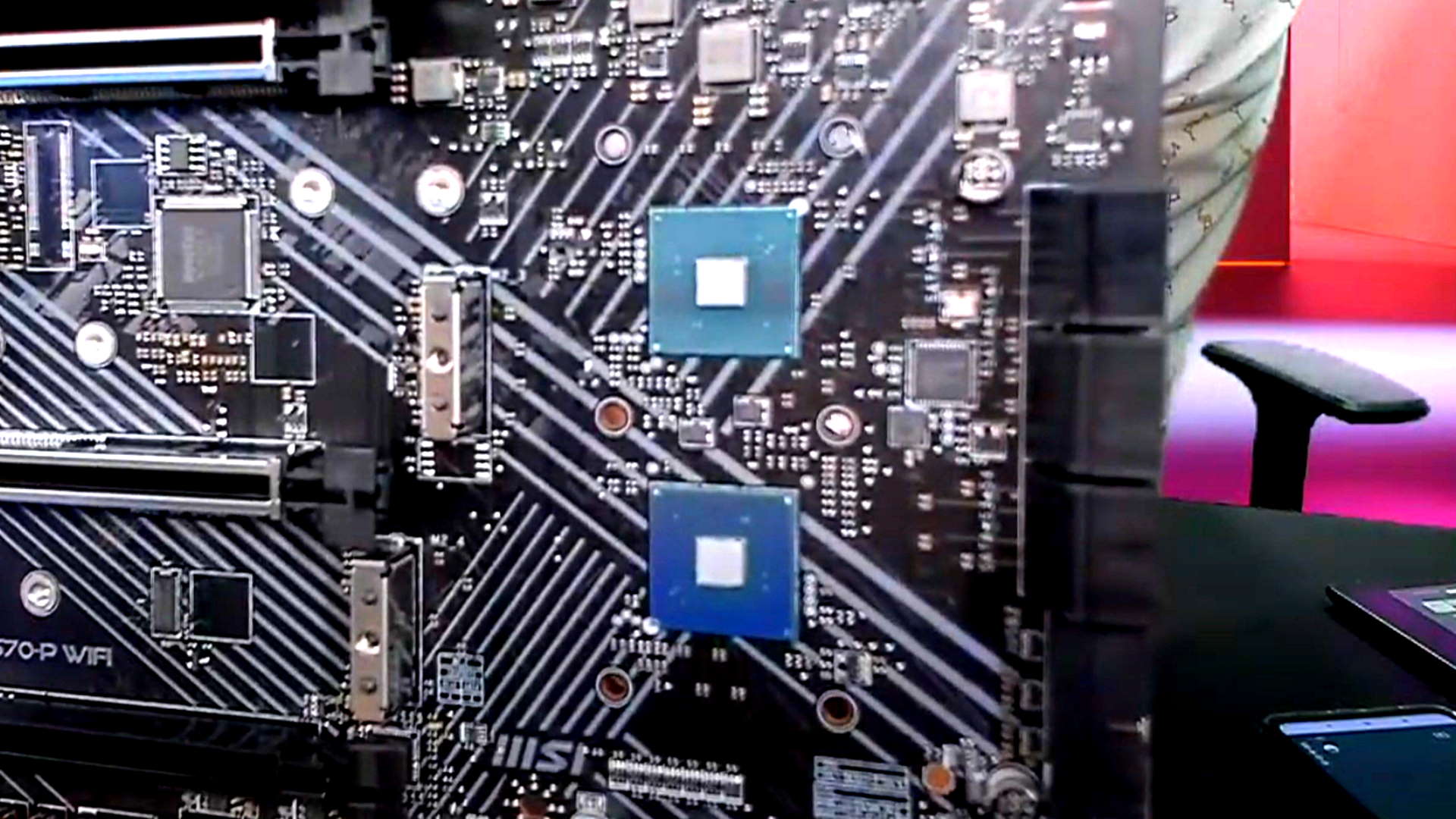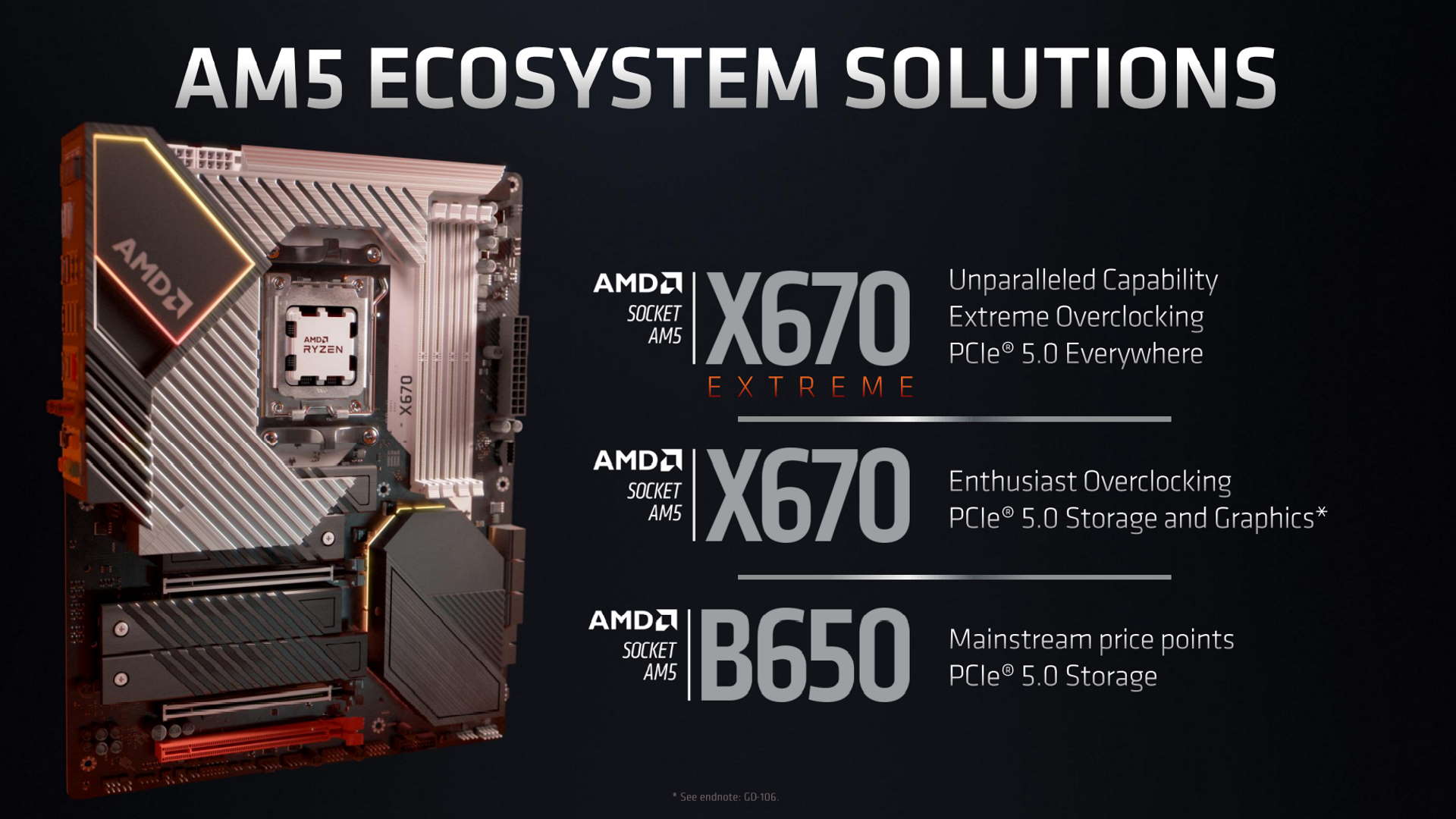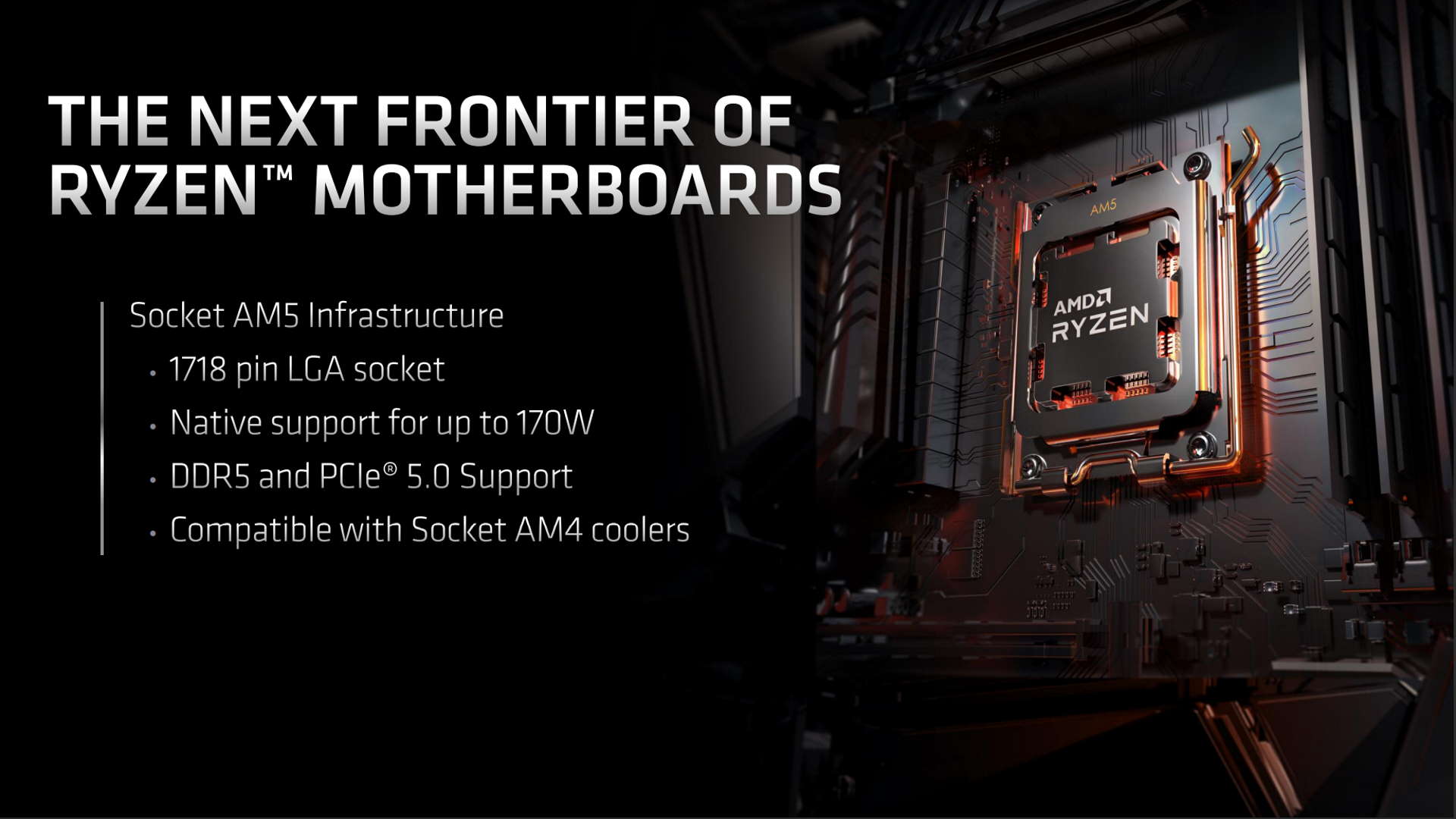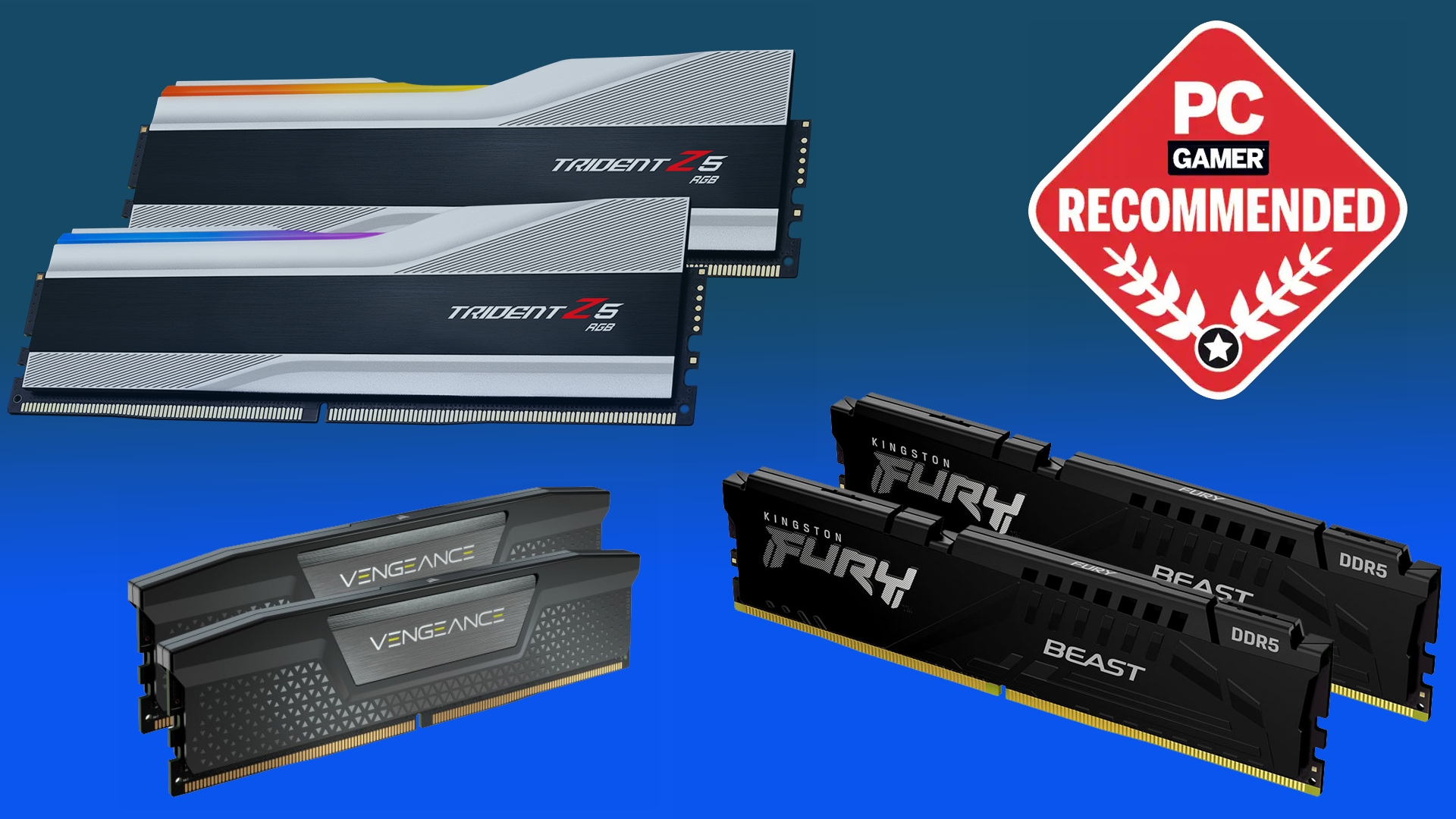AMD has actually created only one chipset for Zen 4, not three
It has effectively killed the discrete chipset, creating a single die that can double up to form the high-end X670E, X670, and B650 platforms.

MSI has been all over the place since AMD revealed the Zen 4 Ryzen 7000-series processor generation, showing off its own engineering samples, and unreleased X670 motherboards. Initial videos highlighting the insertion method of the new Intel-like LGA processors have been taken down, but undeterred MSI has now lifted the lid on the chipsets being used for AM5 motherboards.
The interesting thing to note is that the rumours suggesting dual-chip designs for the top-end AMD chipsets have now been confirmed since the Computex unveiling. But, contrary to what was originally being ground down by the rumour mill, these aren't single package chiplet designs, but two discrete chipset chips sat beneath the passive heatsinks of the X670 and X670E motherboards.
It's a smart design that apes the chiplet approach AMD championed with its Zen 2 architecture, and means it can save money on the silicon being created for its motherboard partners by creating what is effectively a single motherboard I/O chip that can be used for multiple 'chipsets'. This chip will look after things like the PCIe 4.0 controller, networking, and USB support.
Previously you had different chipset silicon for the likes of the X570 and B560 boards, with different levels of interconnect support. But, with the new AM5 motherboards, AMD has simplified things so that to separate out the feature sets of its new chipsets it can either use one of these I/O chips or double up the features by using a pair of them.
"It's not that they are two X670 chipsets, these two chips form X670."
Michiel Berkhout
That's the situation on the top-end boards, with the X670 and X670E using a pair of these chips and the B650 only using a single one. "It's not that they are two X670 chipsets, these two chips form X670," says MSI's Michiel Berkhout on the MSI Insider livestream.
"This is just to double connectivity," explains his colleague, Eric Van Beurden. "Basically two chipsets delivering double the functionality."




Which kind of means AMD has effectively killed the discrete chipset chip. There aren't really going to be X670E, X670, or B650 chipsets per se, just different numbers of the single AM5 Zen 4 chipset installed on a motherboard.
Keep up to date with the most important stories and the best deals, as picked by the PC Gamer team.
Which is going to make the B650 board an interesting one. With a single chipset die on the board it will have half the connectivity of the dual-chip X670/E, but it will still essentially have all the PCIe 5.0 lanes available because those are all coming out of the Zen 4 CPU's I/O die. It's just that AMD is only talking about allowing PCIe 5.0 storage on the B650, and not graphics support.
Really, that's no big thing as the bandwidth available to PCIe 4.0 x16 slot is still plenty for pretty much any GPU you will see over the next year or two, even if they are nominally PCIe 5.0 graphics cards.
But it does offer the possibility that the rumours of a potential B650E 'chipset' aren't just ridiculous conjecture. Down the line, it would be easy for motherboard vendors to unlock more PCIe 5.0 lanes from the CPU to create a higher-tier B650 design, though you would then end up with high-end B650 boards with a price crossover against the more affordable X670 boards, potentially without PCIe 5.0 graphics support.

Best DDR5 RAM: the latest and greatest
Best DDR4 RAM: affordable and fast
That would also enable higher-tier mini-ITX boards as well. As mentioned in the MSI livestream, creating a wee X670 board will be tough because not only are you having to deal with the larger AM5 socket and the need for VRM support up to 170W of socket power, you also have to have two discrete chipset dies, with heatsinks covering both.
B650 makes a more logical platform for mini-ITX then, but would mean there's no chance of PCIe 5.0 graphics support unless there is a future B650E 'chipset'.
However it shakes out, this is a smart step for AMD. With so much of the traditional 'motherboard stuff' now sitting within the processor itself, the need to design and manufacture multiple different chipset dies doesn't make sense. It's far simpler, and therefore cheaper to just create one and double up if you need to.

Dave has been gaming since the days of Zaxxon and Lady Bug on the Colecovision, and code books for the Commodore Vic 20 (Death Race 2000!). He built his first gaming PC at the tender age of 16, and finally finished bug-fixing the Cyrix-based system around a year later. When he dropped it out of the window. He first started writing for Official PlayStation Magazine and Xbox World many decades ago, then moved onto PC Format full-time, then PC Gamer, TechRadar, and T3 among others. Now he's back, writing about the nightmarish graphics card market, CPUs with more cores than sense, gaming laptops hotter than the sun, and SSDs more capacious than a Cybertruck.

